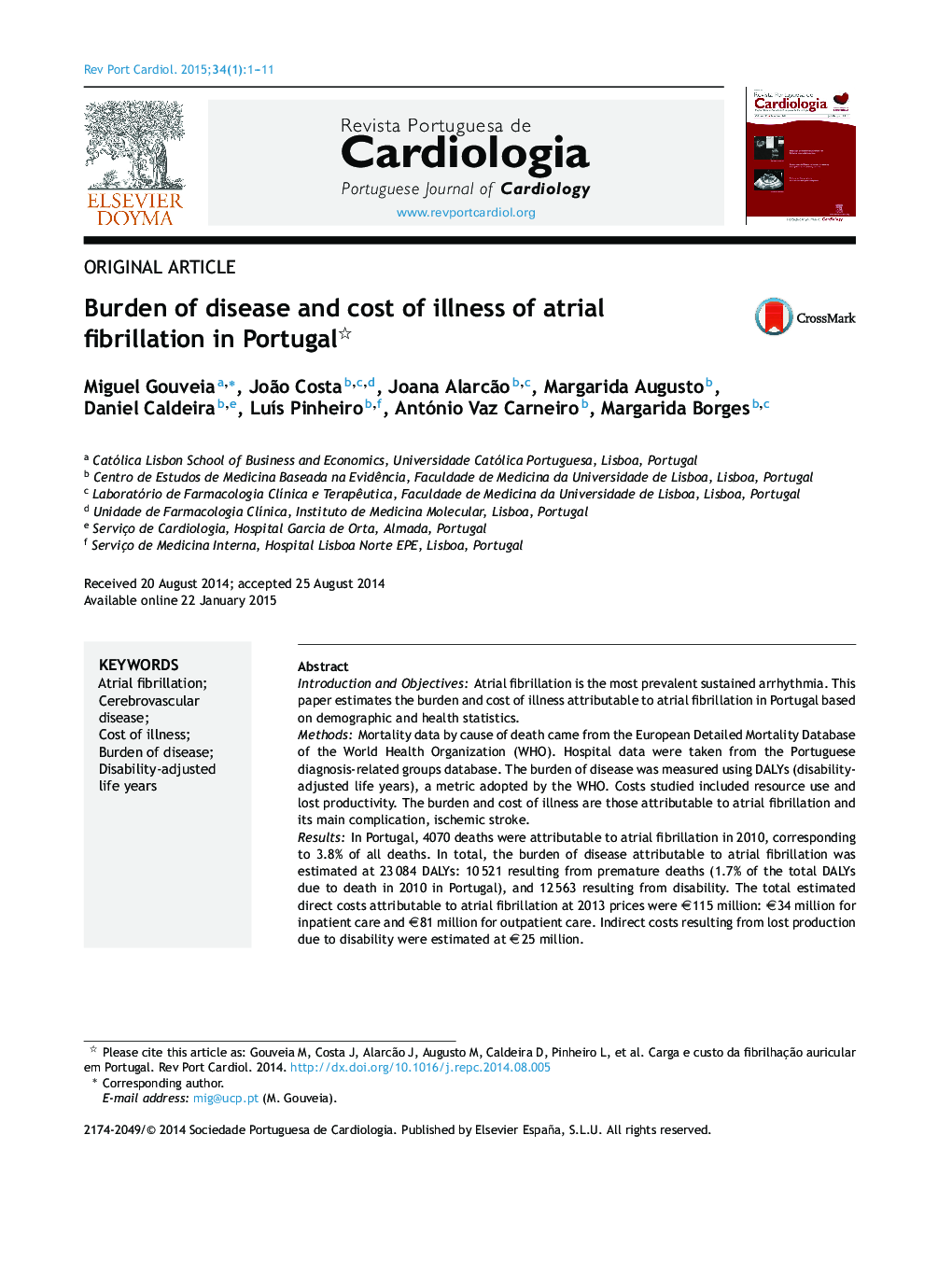| کد مقاله | کد نشریه | سال انتشار | مقاله انگلیسی | نسخه تمام متن |
|---|---|---|---|---|
| 3020196 | 1182292 | 2015 | 11 صفحه PDF | دانلود رایگان |
Introduction and ObjectivesAtrial fibrillation is the most prevalent sustained arrhythmia. This paper estimates the burden and cost of illness attributable to atrial fibrillation in Portugal based on demographic and health statistics.MethodsMortality data by cause of death came from the European Detailed Mortality Database of the World Health Organization (WHO). Hospital data were taken from the Portuguese diagnosis-related groups database. The burden of disease was measured using DALYs (disability-adjusted life years), a metric adopted by the WHO. Costs studied included resource use and lost productivity. The burden and cost of illness are those attributable to atrial fibrillation and its main complication, ischemic stroke.ResultsIn Portugal, 4070 deaths were attributable to atrial fibrillation in 2010, corresponding to 3.8% of all deaths. In total, the burden of disease attributable to atrial fibrillation was estimated at 23 084 DALYs: 10 521 resulting from premature deaths (1.7% of the total DALYs due to death in 2010 in Portugal), and 12 563 resulting from disability. The total estimated direct costs attributable to atrial fibrillation at 2013 prices were €115 million: €34 million for inpatient care and €81 million for outpatient care. Indirect costs resulting from lost production due to disability were estimated at €25 million.ConclusionsAtrial fibrillation has an important social impact in Portugal due to its associated mortality and morbidity, and was responsible in 2013 for a total cost of €140 million, about 0.08% of gross domestic product.
ResumoIntrodução e objetivosA fibrilhação auricular é a disritmia persistente mais prevalente. Pretendemos estimar a carga e custos da doença atribuíveis à fibrilhação auricular em Portugal com base nas estatísticas demográficas e de saúde.MétodosUtilizou-se informação sobre mortalidade por causa da OMS-Europa. Dados hospitalares foram provenientes da base de dados dos GDH. A carga da doença foi medida pelos DALY (disability-adjusted life years) ou anos de vida perdidos ajustados por incapacidade, uma métrica adotada pela Organização Mundial de Saúde. Os custos incluíram os consumos de recursos e as perdas de produtividade. A carga e os custos da doença estimados são os atribuíveis à fibrilhação auricular e à sua principal complicação, o acidente vascular cerebral isquémico.ResultadosEm Portugal, no ano 2010, podem atribuir-se à fibrilhação auricular 4070 mortes correspondendo a 3,8% do total das mortes ocorridas. A carga da doença atribuível à fibrilhação auricular foi estimada em 23.084 DALY: 10.521 decorrentes das mortes prematuras (1,7% dos DALY por morte em Portugal em 2010) e 12 563 devidos à incapacidade gerada pela morbilidade. O total estimado de custos diretos para o sistema de saúde a preços de 2013 atribuíveis à fibrilhação auricular foi de 115 M€ (milhões de euros): 34 M€ em internamento e 81 M€ em ambulatório. Os custos indiretos gerados pela produção perdida devidos à incapacidade causada pela doença foram estimados em 25 M€.ConclusõesA fibrilhação auricular tem um importante impacto social em Portugal devido à mortalidade e morbilidade geradas, podendo-se-lhe atribuir em 2013 um custo total de 140 M€, cerca de 0,08% do produto interno bruto.
Journal: Revista Portuguesa de Cardiologia (English Edition) - Volume 34, Issue 1, January 2015, Pages 1–11
